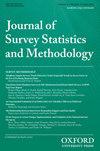评估数据融合方法以改进收入建模
IF 1.6
4区 数学
Q2 SOCIAL SCIENCES, MATHEMATICAL METHODS
引用次数: 1
摘要
收入是衡量生活水平和个人福祉的重要经济指标。在德国,不同的数据来源为分析收入分配提供了模棱两可的证据。税务统计(TS)是一份收入登记簿,记录了2014年德国超过4000万纳税人的总收入,其中包含了涵盖全部收入分布的最可靠的收入信息。然而,它只提供了收入分析所必需的有限范围的社会人口变量。为了应对这一挑战,我们利用来自德国人口的1%代表性样本——微观人口普查(Microcensus)的教育和工作时间信息来丰富税收数据。我们研究了两种类型的数据融合方法,非常适合于TS和微观人口普查的特定数据融合场景:缺失数据方法和性能预测模型。我们进行了模拟研究并提供了一个经验应用,比较了所提出的数据融合方法,结果表明多项式回归和随机森林是最适合我们的数据融合场景的方法。本文章由计算机程序翻译,如有差异,请以英文原文为准。
Evaluating Data Fusion Methods to Improve Income Modeling
Income is an important economic indicator to measure living standards and individual well-being. In Germany, different data sources yield ambiguous evidence for analyzing the income distribution. The Tax Statistics (TS)—an income register recording the total population of more than 40 million taxpayers in Germany for the year 2014—contains the most reliable income information covering the full income distribution. However, it offers only a limited range of socio-demographic variables essential for income analysis. We tackle this challenge by enriching the tax data with information on education and working time from the Microcensus, a representative 1 percent sample of the German population. We examine two types of data fusion methods well suited to the specific data fusion scenario of the TS and the Microcensus: missing-data methods and performant prediction models. We conduct a simulation study and provide an empirical application comparing the proposed data fusion methods, and our results indicate that Multinomial Regression and Random Forest are the most suitable methods for our data fusion scenario.
求助全文
通过发布文献求助,成功后即可免费获取论文全文。
去求助
来源期刊
CiteScore
4.30
自引率
9.50%
发文量
40
期刊介绍:
The Journal of Survey Statistics and Methodology, sponsored by AAPOR and the American Statistical Association, began publishing in 2013. Its objective is to publish cutting edge scholarly articles on statistical and methodological issues for sample surveys, censuses, administrative record systems, and other related data. It aims to be the flagship journal for research on survey statistics and methodology. Topics of interest include survey sample design, statistical inference, nonresponse, measurement error, the effects of modes of data collection, paradata and responsive survey design, combining data from multiple sources, record linkage, disclosure limitation, and other issues in survey statistics and methodology. The journal publishes both theoretical and applied papers, provided the theory is motivated by an important applied problem and the applied papers report on research that contributes generalizable knowledge to the field. Review papers are also welcomed. Papers on a broad range of surveys are encouraged, including (but not limited to) surveys concerning business, economics, marketing research, social science, environment, epidemiology, biostatistics and official statistics. The journal has three sections. The Survey Statistics section presents papers on innovative sampling procedures, imputation, weighting, measures of uncertainty, small area inference, new methods of analysis, and other statistical issues related to surveys. The Survey Methodology section presents papers that focus on methodological research, including methodological experiments, methods of data collection and use of paradata. The Applications section contains papers involving innovative applications of methods and providing practical contributions and guidance, and/or significant new findings.

 求助内容:
求助内容: 应助结果提醒方式:
应助结果提醒方式:


